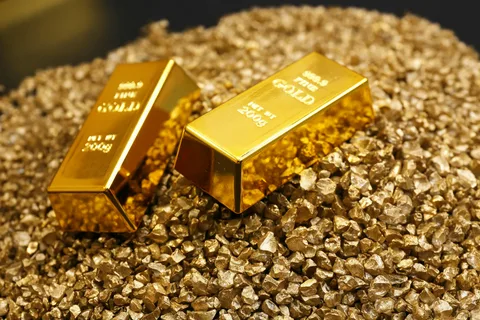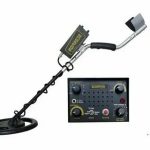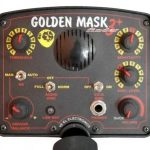Metals coins have long been an integral part of global economies, serving as a tangible and universally recognized form of currency. In today’s economy, the value of metals coins continues to be of great significance, whether in terms of their historical and cultural importance, or their practical use in trade and commerce. This article seeks to explore the enduring value of metals coins in the modern economy, examining their role as a store of value, a means of exchange, and a reflection of a nation’s economic stability. Additionally, we will consider the potential impact of digital currency on the future of metals coins and their place in the evolving financial landscape.
Exploring the value of metal coins in today’s economy is essential to understanding their impact on financial systems and daily transactions. Metal coins have been used as a form of currency for centuries, and they continue to play a crucial role in the global economy. Their physical presence and intrinsic value make them a trusted and reliable means of exchange, particularly in regions where digital payment systems are not as prevalent. Additionally, metal coins hold historical and cultural significance, often serving as symbols of national identity and heritage. Understanding the value and place of metal coins in today’s economy helps to shed light on the larger dynamics of money, trade, and economic stability.
The History of Ancient Metal Coins and Their Value Today
As a form of currency and a representation of wealth, metal coins have played an important role in societies throughout history. From the ancient civilizations of Greece and Rome to the modern era, coins have been made from various metals such as gold, silver, copper, and bronze. Their intricate designs and engravings not only served as a means of trade but also reflected the political and cultural values of the time. Today, metal coins continue to hold value for collectors and investors, with rare and old coins often fetching high prices at auctions and in the numismatic market.
The history of ancient metal coins dates back to around 600 BC when the first coins were minted in the kingdom of Lydia, in what is now modern-day Turkey. These early coins were made from electrum, a natural alloy of gold and silver, and were used primarily for trade and as a unit of account.
Over the centuries, various civilizations around the world began minting their own coins, using different metals such as gold, silver, bronze, and copper. The design of these coins often featured the images of rulers, deities, or important symbols, serving as a means of propaganda and communication.
The value of ancient metal coins today largely depends on their rarity, historical significance, and the condition of the coin. Collectors and numismatists are willing to pay significant amounts for well-preserved and rare ancient coins, often valuing them for their historical and artistic importance.
Many ancient coins can also serve as a valuable investment, with the potential to increase in value over time. However, it is important for collectors to be aware of the risks and to ensure the authenticity of the coins they are purchasing.
Overall, the history of ancient metal coins is a fascinating reflection of the development of human civilization, and their value today continues to be a subject of great interest and importance in the field of numismatics.
The Evolution of Metal Coins Throughout Different Civilizations
Metal coins have been used by different civilizations for thousands of years and have evolved in various ways. The first metal coins appeared in ancient Greece and China around the 7th century BCE, replacing earlier forms of currency such as shells, beads, and precious metals. These early coins were typically made from silver, gold, or bronze and often featured inscriptions or engravings to denote their value and the issuing authority.
Over time, the use of metal coins spread to other parts of the world, including the Roman Empire, India, and the Islamic world. Each civilization developed its own unique coinage system, with different designs, denominations, and materials used. For example, the Roman Empire employed a wide variety of coin designs and metals, including bronze, silver, and gold, while the Indian subcontinent produced intricate gold and silver coins adorned with religious symbols and inscriptions.
During the Middle Ages, the coinage system continued to evolve, with the introduction of new minting techniques, standardized designs, and the widespread use of copper coins for small transactions. The Renaissance period saw further advancements in coin production, including the development of milling and edge lettering to deter counterfeiting.
In more recent times, metal coins have continued to play a crucial role in global trade and commerce. Today, most countries issue their own coinage, each with unique designs and denominations. While the use of physical currency has decreased in the digital age, metal coins remain an essential part of everyday transactions and continue to be valued for their historical and cultural significance.
Rare and Valuable Metal Coins: A Collector’s Guide
“Rare and Valuable Metal Coins: A Collector’s Guide” is a comprehensive resource for numismatists and coin enthusiasts. This book offers detailed information about rare and valuable metal coins, including their history, design, and current market value. It also provides insights into the process of collecting and preserving these precious items. Whether you are a seasoned collector or just starting out, this guide is a valuable tool for exploring the world of rare and valuable metal coins.
Exploring the Intricate Designs of Metal Coins from Around the World
See also: detector metal
Exploring the Intricate Designs of Metal Coins from Around the World is a fascinating journey into the numismatic world. This exploration allows enthusiasts to admire the craftsmanship and artistry that goes into creating these small pieces of history. From ancient civilizations to modern-day minting techniques, the designs on metal coins offer a glimpse into the culture, traditions, and symbolism of different countries. Whether it’s the detailed portraits of political figures, iconic landmarks, or national symbols, each coin tells a unique story that adds richness to the global currency landscape. This exploration not only offers a deeper understanding of the art of coinage but also a broader appreciation for the diversity and beauty found in currencies worldwide.
The Investment Potential of Precious Metal Coins in Today’s Market
Precious metal coins, such as gold, silver, platinum, and palladium, have long been popular investment vehicles due to their intrinsic value and historical track record of maintaining and growing in value over time. In today’s market, these coins continue to be an attractive option for investors looking to diversify their portfolios and protect against market volatility.
The investment potential of precious metal coins lies in their ability to serve as a hedge against inflation and currency devaluation. As fiat currencies fluctuate in value, precious metals tend to hold their worth, making them a stable and reliable store of value. In addition, the limited supply of precious metals means that they are resistant to the kind of manipulation and devaluation that can occur with paper money.
Moreover, the demand for precious metal coins remains strong in both the industrial and consumer sectors, further bolstering their investment potential. As emerging economies continue to grow and develop, the need for precious metals in manufacturing and technology is expected to rise, driving up their value.
While the prices of precious metal coins can fluctuate in the short term, their long-term outlook remains positive, making them a compelling option for investors seeking stability and growth in today’s market. With their proven track record of preserving wealth and their potential for substantial returns, precious metal coins are an attractive investment opportunity for those looking to secure their financial futures.
Uncovering the Symbolism and Significance of Metal Coins in Culture
Uncovering the symbolism and significance of metal coins in culture can provide insight into the values and beliefs of different societies. Coins have been used as a form of currency for thousands of years and can hold deep cultural and historical meaning. They often feature symbolic imagery, such as national symbols, historical figures, or religious icons, which can reflect the values and identity of a particular culture. Additionally, the materials used to make coins, such as gold, silver, and copper, can also carry their own symbolic significance. Studying the symbolism of metal coins in various cultures can offer valuable insight into the cultural, political, and economic dynamics of different societies throughout history.
The Process of Minting Metal Coins: From Design to Distribution
The process of minting metal coins begins with the design stage, where artists and designers create the artwork for the coin. Once the design is approved, a master die is created, which will be used to produce the working dies for striking the actual coins.
The next step is to prepare the metal blanks, which are typically made from an alloy of different metals. The blanks are then fed into a coining press, where the design is stamped onto the front and back of the coin with tremendous force. This produces the raised images and inscriptions that we see on the finished coin.
Once the coins are minted, they are inspected for quality and then packaged for distribution. Some coins may also undergo additional treatments, such as plating or coloring, before they are ready to be released into circulation or sold to collectors.
After the coins are minted, they are distributed to banks, financial institutions, and other authorized dealers who then make them available to the public. Some coins may also be sold directly by the mint or through a network of authorized coin dealers.
The process of minting metal coins involves a combination of artistry, craftsmanship, and technology to produce high-quality, durable coins that are suitable for use in everyday transactions.
Preserving the Beauty and Integrity of Metal Coins Through Proper Care
Preserving metal coins requires proper care and maintenance to ensure their beauty and integrity over time. This can involve regular cleaning with a soft cloth and mild soap, avoiding exposure to harsh chemicals or abrasive materials, storing them in a dry and stable environment, and handling them with care to prevent scratches or dents. Additionally, using protective holders or cases can help minimize potential damage and maintain the coin’s condition. By following these guidelines, collectors and enthusiasts can ensure that their metal coins remain in excellent condition for years to come.
The Fascinating World of Metal Detector Enthusiasts and Their Coin Finds
“The Fascinating World of Metal Detector Enthusiasts and Their Coin Finds” is a book that delves into the world of metal detecting enthusiasts and their exciting discoveries. The book showcases the passion and dedication of these individuals as they search for buried treasures in various locations. With a focus on coin finds, the book provides a glimpse into the thrill of uncovering historical and valuable coins, as well as the stories behind each discovery. It also explores the techniques and strategies used by metal detector enthusiasts to maximize their chances of finding rare and valuable coins. Overall, the book offers a captivating look into the world of metal detecting and the fascinating treasures that can be unearthed.
The Role of Metal Coins in Shaping Economic Systems and Trade History
Metal coins have played a significant role in shaping economic systems and trade history throughout the world. The use of metal coins for trade and commerce dates back thousands of years, with the first metal coins being minted in ancient civilizations such as the Lydians and the Chinese.
The introduction of metal coins allowed for standardized forms of currency, which facilitated trade between different regions and cultures. This helped to stimulate economic growth and development, as well as to promote international trade and commerce.
Metal coins also played a crucial role in the development of monetary systems and financial institutions. The use of metal coins as a form of currency allowed for the establishment of market economies and the development of banking systems and financial markets.
Additionally, the use of metal coins as a form of currency facilitated the development of international trade routes and networks, as well as the exchange of goods and services between different regions and civilizations.
Overall, the role of metal coins in shaping economic systems and trade history has been profound, and their impact on global commerce and economic development cannot be overstated.
In conclusion, it is evident that metals coins continue to hold significant value in today’s economy. Their durability, intrinsic value, and historical significance make them a timeless form of currency. As we continue to explore the value of metals coins in various aspects of our economy, it is important to recognize their continued relevance and consider their role in shaping the future of currency and trade.
See also









